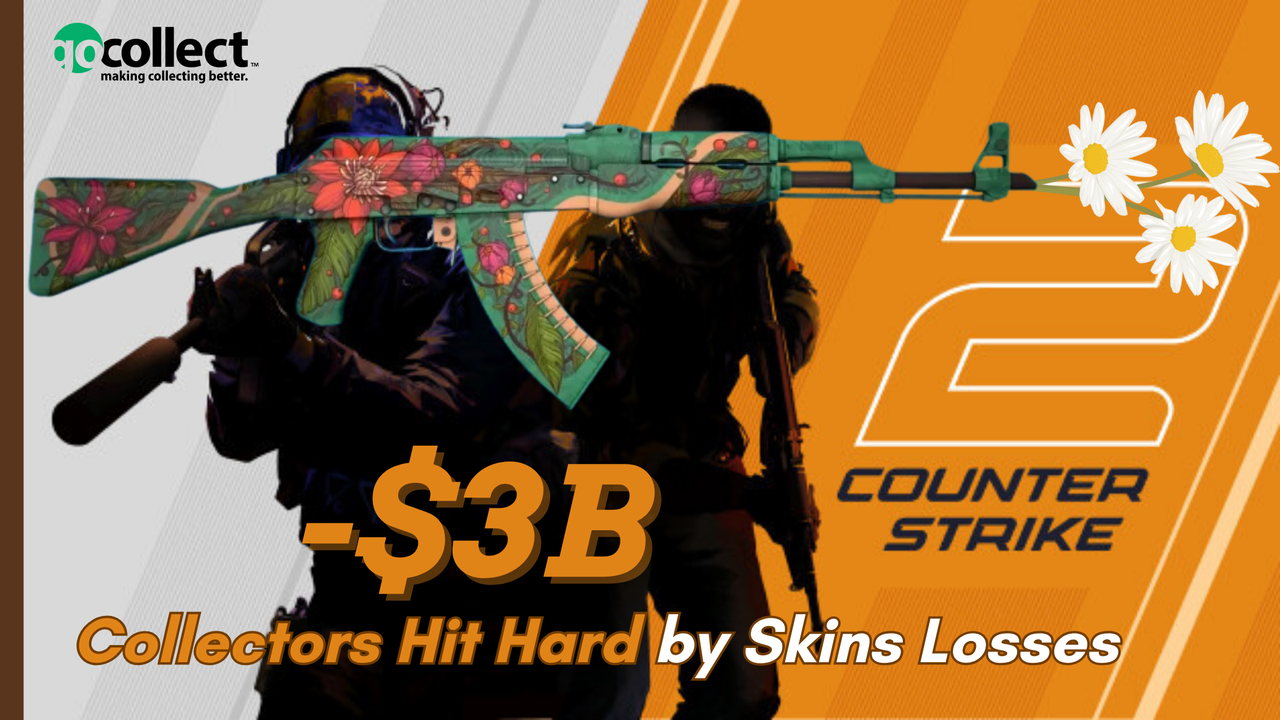Was Valve’s latest update to Counter-Strike 2 expected to shake one of the largest digital economies in gaming? Whatever the intentions were, that’s exactly what happened. Here's a quick analysis of what went down, why it took place, and how the effects may ripple outwards.
There Are Collectible Markets 'Inside' Many Modern Games
In late October, Valve expanded the “Trade Up Contract” system for Counter-Strike 2 skins (a skin is a cosmetic item that changes a character’s or weapon’s appearance without affecting gameplay). The update now allows players to exchange five “Covert” skins (previously a high-tier rarity) for one “Gold”-tier knife or glove. This single change eliminated the exclusivity that had defined the most sought-after digital collectibles in Counter-Strike for years.
Before this update, gold-tier items could only be acquired through Steam or third-party marketplaces, by winning a souvenir package during a major tournament, or by opening weapon cases. Case openings are the most common method, but the odds of unboxing an Exceedingly Rare item like a knife or gloves are extremely low, estimated at around 0.26%.
The impact was immediate. According to Price Empire, the estimated total market value for CS2 skins dropped from around $6 billion to just over $3 billion in less than two days. The knives - long considered the centerpiece of the game’s collecting scene - saw their average values cut in half.
For everyday players, this adjustment was good news. Acquiring top-tier items became more accessible, removing the lottery-like odds that once made gold-tier ownership a pipe dream for some. But for investors and collectors who had built digital portfolios around the game’s artificial scarcity, the change wiped out years of market growth overnight.
A Familiar Equation
This moment in gaming highlights a familiar principle across all collectibles: rarity drives value. When supply increases suddenly, and exclusivity drops, whether through a game update or a warehouse discovery in the physical world, prices adjust quickly.
The difference in this case is control. In physical collectibles - whether that is comics, cards, vinyl, you name it - small changes to availability usually come through discovery, not design. You can’t “patch” a first print or code a reissue of a rare card. In the digital realm, however, rarity exists entirely at the discretion of the developer. Valve didn’t intend to crash the market. It was a systems adjustment. But it underscores the risk of investing heavily in assets that rely on a single entity’s rules. When one company controls the supply and mechanics, even a “small update” can reset the economy.
The shockwaves from Counter-Strike 2’s recent skin market crash appear to be confined to CS2 alone; so far there are no signs of other in-game markets being affected, though many games with cosmetic economies operate on the same basic principles: rarity, perceived value, and a peer-to-peer or developer-controlled marketplace.
That scenario illustrates a broader truth for digital collectibles: if any developer changes drop rates, trade mechanics, or introduces new acquisition paths, the perceived scarcity of items can evaporate quickly. For collectors and investors, it’s a reminder that these markets are fragile and sensitive to developer intervention, and that value is not guaranteed simply because an item is rare today. Physical collectible markets, by contrast, are subject to similar forces- print runs, re-issues, or even counterfeiting - but they benefit from the permanence and tangibility that virtual goods lack.
Past Crashes in Gaming Economies
The CS2 skin crash is unprecedented in value loss, but it isn’t the first time a developer’s actions -intentional or not - have reshaped a player-driven economy. These markets are fragile by design; change the rules, and the value structure can shift overnight. Here are some notable examples where that exact thing happened:
Team Fortress 2 “Crate Depression” (2019)
A bug caused certain crates to drop unlimited rare Unusual items (normally some of the most valuable cosmetics in the game). The sudden flood of supply tanked prices instantly before Valve intervened and trade-locked the affected items. It was one of the closest parallels to the CS2 situation in terms of sudden, developer-triggered devaluation.
Diablo III: Shutdown of the Real-Money Auction House (2014)
Diablo III’s Real Money Auction House was meant to legitimize item trading, but it ended up undermining the entire loot system. Players could simply buy upgrades instead of earning them, shifting the game’s focus from gameplay to market flipping. At least, that's what Blizzard thought when they shut it down, damaging the in-game economy and forcing major changes to the game’s long-term plans.
Fortnite: Reissues “Rare” Cosmetics
Epic Games regularly re-releases skins once considered highly limited or “OG.” While not a full-on crash, a devaluation occurs: perceived rarity drops, and so does the cosmetic’s status in the resale and collector communities. A single rotation in the Item Shop can upend the value narrative around a skin.
A Sign of What’s Next
For GoCollect readers, the takeaway is less about gaming and more about perspective. Markets built on speculation are sensitive to perception. The CS2 event shows how quickly perceived value can change when one variable shifts. While the CS2 skin economy has partially stabilized, it likely won’t return to its pre-update highs. That’s not exactly a failure. It's more of a correction.
That’s why data tracking and transparent valuation matter. At GoCollect, our focus has always been on helping collectors understand what drives price and demand without hype. By studying sales histories, trends, and comparable grades, collectors can make informed decisions before the next big change hits their niche.
Either way you look at it, this story represents a 3-billion dollar blow to the digital collectibles landscape. Something that seems nearly impossible to achieve in the physical collectibles world, without the aid of some sort of environmental or economic disaster.




